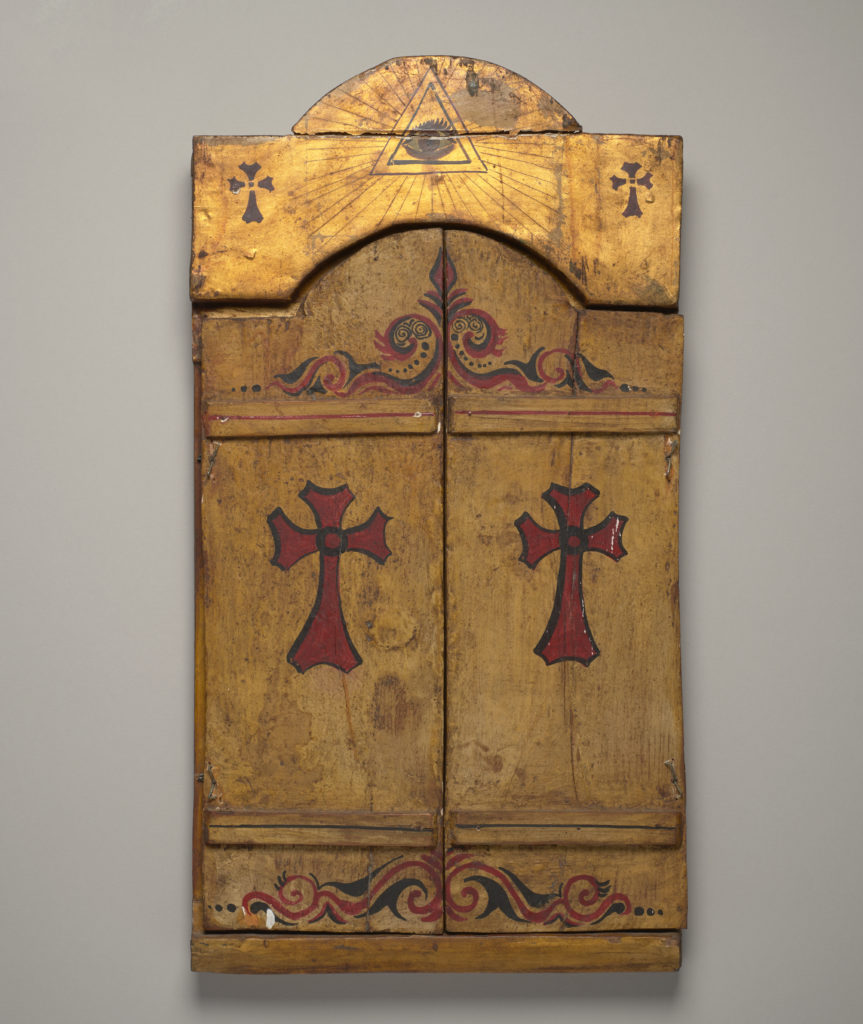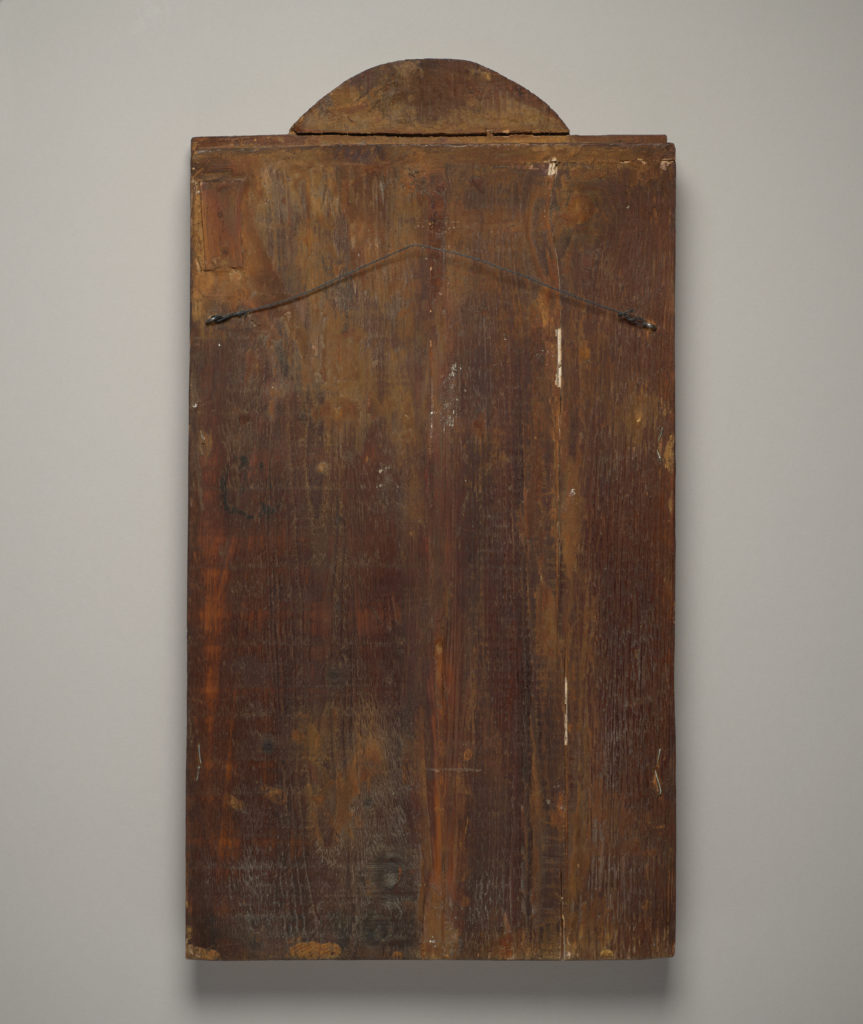Crucifixion Triptych (work of art)
Información sobre la obra de arte
Ideas clave sobre esta obra de arte
- A triptych (trip-tick) is a three-panel painting with hinges that allow the piece to be opened and closed. In the Christian tradition, triptychs function as church altarpieces (works of art that decorate the space above and behind the altar) or as private devotional objects. Triptychs often have simple exteriors that open to reveal decadent reproductions of icons or biblical stories. While triptychs are most common in the Christian faith, they have been used in many other religious, cultural, and secular contexts.
- This triptych showcases the syncretism of various cultures and religions in Egypt. When it is closed, the golden triptych displays two red crosses beneath the glowing eye of the Egyptian god known as Ra or Horus. The center panel inside shows Jesus on the cross, with John the Evangelist on one side of him and the Virgin Mary on the other. The side panels depict the two men who were crucified alongside Jesus for committing theft. Above Jesus’s head is the word IRNI, which appears to be the Arabic adaptation of INRI (meaning Jesus Nazarene, King of the Jews).
- According to Christian belief, Saint Mark the Evangelist introduced Christianity to Egypt during the first century. Following the Arab conquest of Egypt in 600 C.E., Egyptian Christians took on the name Copts (the Arabic word for Egyptians) in order to distinguish themselves from Muslims and other non-Christians.
Más información
Christianity is believed to have been introduced to Egypt around 33 C.E. by Saint Mark the Evangelist. Following the Arab conquest of Egypt in 600 C.E., Egyptian Christians adopted the name Copt, which means “Egyptian” in Arabic. While most Egyptians are practicing Sunni Muslims, Coptic Christians still make up around 10 percent of the population. Because of Egypt’s diverse population, many secular and religious art objects showcase a blend of Egyptian, Islamic, and Christian iconography.
This Coptic icon represents the continuation of Christianity in Africa for thousands of years. Notice the writing above each figure and the sign above Jesus: the Latin INRI is written IRNI. This is not an error; it reflects the rules of Arabic script, which is written from right to left. A triangle symbolizing the Holy Trinity appears above the cross, with the eye of Horus or Ra depicted inside it. Like the Christian symbol of an all-seeing God, the eye of Horus/Ra was a powerful symbol of protection in ancient Egypt.
This blending of Christian, Arabic, Coptic, and Egyptian languages and icons highlights global connectivity and the combination of diverse beliefs and practices in African culture today.
Recursos adicionales
Recursos para los profesores:
- Read an article about the origin and evolution of triptychs in art history.
- Watch a video about Coptic Christians.
- Watch another short video about the history of Christianity.
Recursos para los estudiantes:
- Watch a video about triptychs.
- Explore images of triptychs from around the world.
- View another crucifixion painting from the NCMA collection and compare it to the Crucifixion Triptych. What are the similarities and differences between these works of art?



